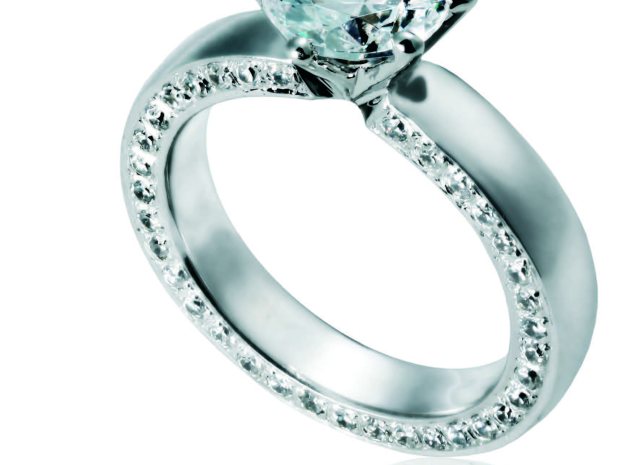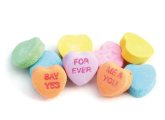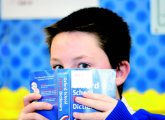Take learners into a spectacularly beautiful world with Dr Joanna Rhodesí fascinating and creative ideas for KS3 chemistry…
TODAY YOU WILL…
Learn about the different types of crystal and will make your own
- use a variety of media to film crystallisation in action
- discover more about our most prized gemstones and learn how a perfect diamond is cut to show off all its brilliance
Everyone noticed a lot of something in March that shouldn’t have been there snow! This is a very simple but complex substance. If you are lucky enough to observe it under the microscope before it melts you will see that snowflakes are staggeringly beautiful. More permanent crystals like diamonds, rubies, emeralds and amethyst capture the hearts and imagination of royalty, fantasy writers, holistic healers and geologists. Here, pupils can explore the fabulous world of crystallization and make their own crystals ñ cross-curricular links include geology, mathematics and physics.
In this fun starter activity students each make a snowflake shape using pipe cleaners then suspend these in a saturated solution of sodium borate (borax). The following day the pipe cleaners will be covered in the colourless crystals of sodium borate. These are safe for students to display around the classroom and you can even use food colouring to give a more spring or summery feel to your display. Why not try crystal flowers, too, or even a crystal rainbow [AR1]?
STARTER ACTIVITY
MAIN ACTIVITIES
HOT ICE AND STALAGMITES
The process of crystallisation is usually an exothermic process and gives out heat to the surroundings. Students can measure this heat in a surprising experiment which rapidly forms crystals and which looks like the formation of a sheet of ice [AR2].
Initially prepare a saturated solution of sodium acetate for demonstration purposes.
Crystallisation is rapid and is initiated by introducing a tiny seed crystal ñ an entire 500ml beaker can crystallise to solid in less than 10 seconds [AR3]. Ask students whether they expect the beaker to be hot or cold. Their initial reaction is likely to be to predict the latter, and they will be excited to discover that the beaker is in fact quite hot. Repeat the experiment and use an electronic temperature probe to record the temperature change. Students could also film the crystallisation and replay it in slow motion to view the crystals forming. Another way to view the experiment is by dropping a single crystal into a few drops of sodium acetate solution under the microscope; the needle-like crystals are seen to form in a spectacular way [AR4]. Finally, students can model the growth of a stalagmite [AR5] this process can take hundreds of years in a cave but can be reproduced with saturated sodium acetate dripping out of a burette within a single lesso,n with the crystals forming immediately on impact and producing a very realistic stalagmite!
PASS THE SALT
Salts are ionic substances that have a metal cation and a non-metal anion, such as sodium chloride, copper sulfate, potassium iodide. Salts can be prepared using a number of different reactions including neutralisation reactions of acids and bases. Students can prepare copper sulfate in this way by dissolving black copper oxide powder in a bench (1M) solution of sulfuric acid [AR6]. The copper oxide is added until no more will dissolve and a characteristic blue solution is formed. The solution is then filtered and the deep blue solution is evaporated to saturation and poured into an evaporating basin. Students can now produce a stop-motion film of copper sulfate crystallisation by setting up a small camera on a tripod looking into the evaporating basin. A photograph can be taken at the start and end of the school day in the same position each day for a week while the stunning deep blue crystals form. These observations show how a crystal is built layer upon layer with each layer forming in the same characteristic shape for that particular substance. To extend students you could also use trays of Ping-Pong balls to model the close packing of atoms in crystal structures by forming one layer and then placing the next layer onto the spaces between the first [AR7].
SUMMARY
BRILLIANCE
Crystals that are produced for jewellery, such as diamonds, are not simply left as they have formed but are cut. There are many factors that determine a diamond’s brilliance, the most important of which is its ability to reflect light. As a diamond is moved through a light source, tiny flashes will be visible within the stone. Commonly known as sparkle, this is also referred to as scintillation, an effect of the stone’s reflection and refraction of light [AR8]. In order to sparkle the most, the cuts must be made at the angle for total internal reflection. Students can investigate total internal reflection using a glass block [AR9]. Set it up on a sheet of paper marking a line normal to the block and use a ray box to adjust the angle of incidence of light until total internal reflection occurs. Another fun activity is for students to test their skills of dexterity by cutting ëdiamondsí out of tiny pieces of coloured floral oasis [AR9] using a craft knife, trying to produce uniform facets for the traditional shape. How many diamonds would you have to throw away?
As an extension task students can calculate the amount of energy given out by the crystallisation process. this is most effective with a more rapid crystallisation such as sodium acetate. students directly measure the temperature change for an insulated beaker containing 100cm3 of saturated sodium acetate and then use the equation e = mcdt where e is the energy given out, m is the mass of the solution, c is the specific heat capacity of water (4.2 jk-1g-1) and dt is the measured change in temperature. students could speculate on sources of error in the experiment including loss of heat to the surroundings and the approximation of using the specific heat capacity of water.
HOME LEARNING
- Students should investigate the different methods of making salts and produce a flowchart of these. Examples include reacting acid directly with metals such as magnesium, or reacting with a base such as an oxide or alkali such as sodium hydroxide. Alternative methods include precipitation of insoluble salts from solution. Good sources include the BBC Bitesize site [AR7] and DocBrown [AR10].
What are our gemstones made of? Students should use the website ëAll About Gemstonesí [AR11] to write a profile of their choice of mineral. Is there a historical example they can find (such as the Mogul Emerald, Star of Asia Sapphire and the Agra Diamond)?
STRETCH THEM FURTHER
ADDITIONAL RESOURCES
[AR1] SCIENCE KIDS CRYSTALLINE SNOWFLAKE TINYURL.COM/TSCC1
[AR 2] NORTH CAROLINA STATE UNIVERSITY DEPARTMENT OF CHEMISTRY TINYURL.COM/TSCC2
[AR 3] VIDEO OF THE CRYSTALLISATION OF SODIUM ACETATE TINYURL.COM/TSCC33
[AR 4] CRYSTALS GROWING UNDER A
MICROSCOPE IN POLARIZED LIGHT TINYURL.COM/TSCC4
[AR 5] SODIUM ACETATE STALAGMITE TINYURL.COM/TSCC5
[AR 6] BBC BITESIZE MAKING SALTS TINYURL.COM/TSCC6
[AR 7] CLOSE PACKING OF SPHERES AND ORANGES TINYURL.COM/TSCC7
[AR 8] BRILLIANCE HOW TO CUT A DIAMOND TINYURL.COM/TSCC8
[AR 9] COLOURED FLORAL OASIS TINYURL.COM/TSCC9
[AR 10] DOCBROWN MAKING SALTS TINYURL.COM/TSCC10
[AR 11] ALL ABOUT GEMSTONES TINYURL.COM/TSCC11
ABOUT THE EXPERT
Dr Joanna L. Rhodes M.Chem, D.Phil, MRSC is a teacher of science at Shelley College, Huddersfield.









